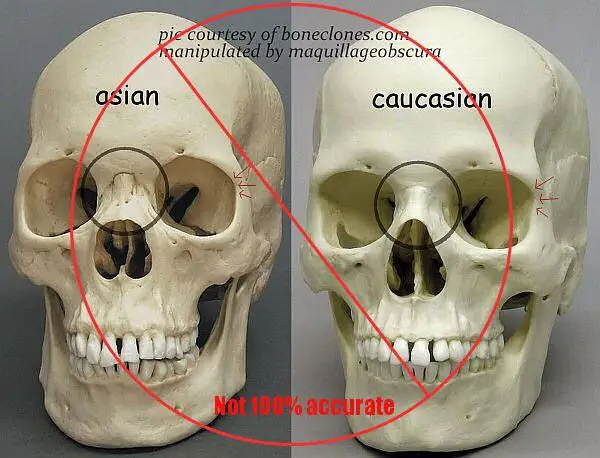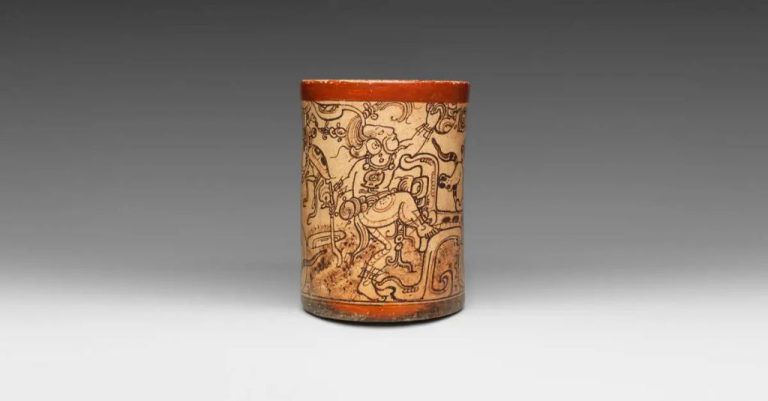What Are The Different Colors Of Skulls?
Skull colors refer to the natural pigmentation of animal skulls. While most skulls are white or cream colored, some animal skulls can have black, yellow, red, green, blue, or purple hues. The coloration is caused by the bone’s chemical makeup and density.
Animal skulls come in a variety of natural colors beyond just white. The color is determined by the minerals and density of the bone. Denser bone with more minerals appears darker, while less dense bone is lighter. Some animal skulls like cows and horses tend to be white, while others like buffalo can be black. The natural skull color also fades over time.
White
White is the most common skull color, seen in Caucasian skulls. White skulls make up the majority of skeletons discovered from ancient European and Middle Eastern archaeological sites. The bone color results from high levels of calcium and other minerals in the bones. White is considered the “baseline” skull color to which other ethnic variations are compared in skeletal analysis. However, many factors beyond ethnicity affect skull color, including diet, environment, and preservation conditions. While trends exist, skull color alone does not definitively determine racial identity.
Sources:
https://pubmed.ncbi.nlm.nih.gov/1155589/
https://www.nytimes.com/2021/10/19/science/skeletons-racism.html
Black
The second most common skull color after white is black, which is seen in Negroid skulls. Studies show the average thickness of black skulls is 6.8 mm which is slightly thicker than white skulls (Source). The increased density and thickness of black skulls is thought to be an evolutionary adaptation to hot, tropical climates by providing more thermal insulation for the brain.

Black skulls tend to have more rounded eye sockets, wider nasal apertures, and larger teeth compared to other races. The skull shape also protrudes forward more than other groups. These features evolved over time as adaptations to the environment and diet of African populations (Source).
Yellow
Yellow skulls are most often seen in Mongoloid skulls, which refers to skulls of individuals from East Asia, Southeast Asia, Polynesia, and the Americas. These skulls have a distinct yellowish hue that derives from the dense bone structure (Source: The colour of the human skull). The yellow coloring is due to the high levels of lipids and carotenoid pigments stored in the compact bones of Mongoloid skulls.
Some players in the Eve Online gaming community use the yellow skull icon to denote defensive or non-hostile actions in the game (Source: How concerned should I be when I see yellow skulls? : r/Eve). However, in physical human skulls, the yellowish coloration is unique to certain ethnic groups and is not related to behavior or personality.
Red
Red skulls appear due to high iron content in some skeletons. This reddish discoloration is seen in some Native American remains, where the iron oxide in the soil leaks into the porous bones over time. According to the Graveyard Keeper Wiki, “A single red skull will subtract from any bonuses, regardless of number of white skulls and Grave Rating.”
As noted on the Obsidian forums, red skulls indicate a high difficulty level in the game 7 Days to Die: “So I’m playing with the difficulty level right below PotD (Hard?), with upward scaling allowed. I’m at level 10. I’m thinking of going all murder hobo on the trader, but he has three red skulls over his head. Does this mean he will wreck my shit if I attack him?”
Sources:
https://graveyardkeeper.fandom.com/wiki/Eight_Tips_to_Improve_Your_Graveyard
https://forums.obsidian.net/topic/106455-three-red-skulls-difficulty-level-means-nothing/
Green
Green skulls are an extremely rare phenomenon caused by traces of copper minerals in the burial soil. The copper reacts with the bone during fossilization, resulting in a deep greenish hue.1 Only a handful of green skulls have been discovered by archaeologists, making them highly unusual finds. The vibrant coloration is striking and has led to the green skull becoming a popular symbol in some cultural contexts.
Most notably, the green skull appears in folklore and fiction as a representative of magic, nature, and the cycle of life and death. Historical examples are rare, however, with just isolated cases documented by researchers. The chemical conditions required to produce a verdant skull are not well understood, but the availability of trace copper deposits seems to be a key factor. When found, green skulls provide a glimpse into the singular conditions that can lead bones to adopt such exotic pigmentation.
Blue
Blue skulls are an extremely rare find in both humans and animals. The blue coloration comes from manganese deposits in the bone that occur during fossilization. Over time, manganese can turn a skull blue, purple, or turquoise.
In 2015, a 12,000 year old mammoth skull was discovered in Siberia with a blue tint. Scientists believe the freezing temperatures and high heavy metal content around the remains caused the manganese staining that made the ancient skull blue.
Blue skulls are more commonly found in wildebeests in Africa. The blue tinge comes from a high concentration of copper in the soils where the wildebeests lived. When the skulls fossilize, the copper reacts with the bone and turns it blue.
While vibrant blue human skulls are very rare, there are accounts of light blue skulls being found at very old burial sites. However, many of these lack scientific documentation. Clearly authenticated discoveries of ancient blue human skulls are almost non-existent.
Overall, blue skulls stand out for their striking color but are extremely uncommon. Most blue skulls occur randomly due to environmental factors, though some animals like the blue wildebeest exhibit blue skull coloring more frequently.
Purple
Purple coloring in skulls is often caused by lead poisoning. Roman scholar Vitruvius described how drinking water conducted in lead pipes would sometimes stain people’s teeth and bones purple. This “saturnine gout”, later called plumbism or “painter’s colic”, was seen in some skulls from ancient Roman burial sites during archaeological excavations. The vivid purple discoloration is from lead’s interaction with phosphate in bones, resulting in lead phosphate deposits (source).
Patterned
Skulls can sometimes exhibit abnormal patterns or markings, often caused by pathological conditions when the person was alive. Examples of patterned skull markings include:
- Freckled – Small dark spots caused by increased pigment.
- Mottled – Irregular patches of color, like liver spots.
- Patchy – Distinct areas of discoloration in irregular shapes.
Other pigmentation patterns may occur due to metabolic disorders, tumors, infection, trauma, or skin conditions. While these markings may seem unusual, they reflect the life experiences and health history of the individual.
Patterned skulls are a reminder of the physical traces that illness and injury can leave behind. Studying them provides insights into ancient medical conditions and environmental factors that affected past populations.
Conclusion
In summary, we learned that skulls come in a variety of colors including white, black, yellow, red, green, blue, purple, and patterned. The color of a skull is often related to factors like diet, environment, and genetics. For example, soil composition impacts skull color which is why maps can show connections between countries based on predominant skull colors. Studying skull colors helps us understand our evolutionary history and makes clear that variety exists even in something as fundamental as bone structure.
Understanding the range of skull colors is important because it shows us that differences are normal and natural. Appreciating this diversity helps us move beyond racial stereotypes or biased assumptions. Skull colors also reveal information about our ancestral environments and lifestyles over time. Overall, noting skull color variations reminds us of the wondrous complexity of life on Earth.




